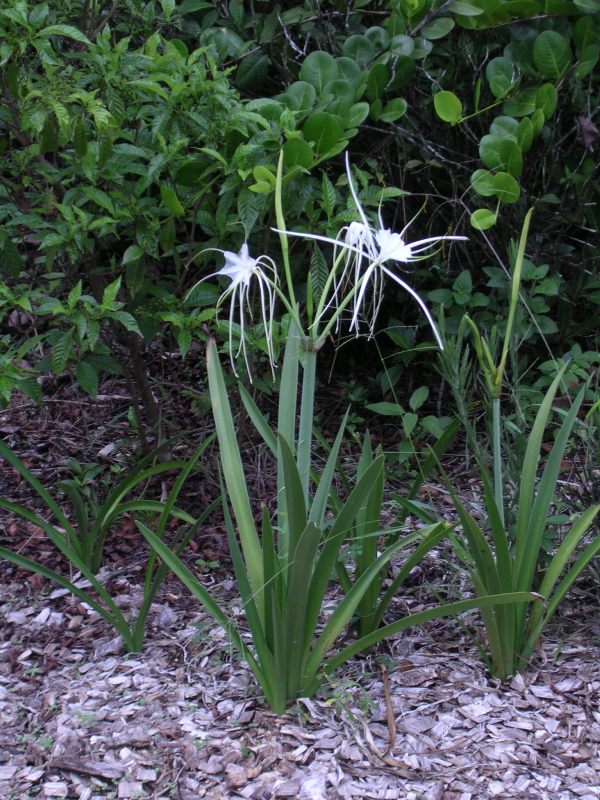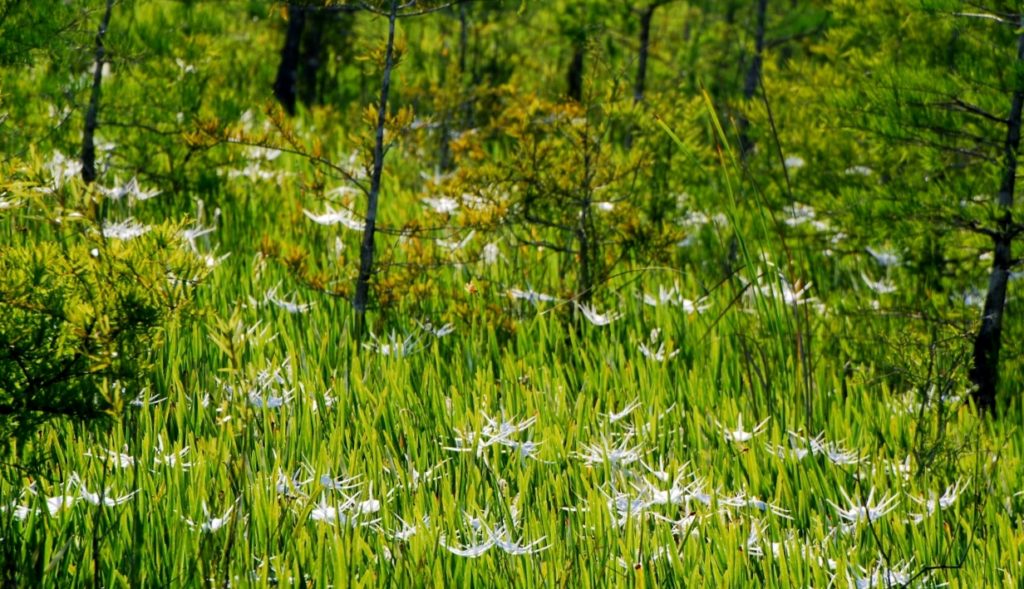

Florida Spiderlily
Hymenocallis tridentata
Florida Spiderlily is found in marshlands and swamps from Vero Beach south. The lower picture is of a marshy area 500 feet or so west of the visitors center at Arthur R. Marshal Loxahatchee Preserve near Boynton Beach, in Palm Beach County, Florida. It is not salt tolerant.
The leaf blades are under 12 inches long and there are up to three, three inch wide flowers per head. This can be compared to the Alligator lily which is found in similar habitats, but has only one flower, click here, or the Mangrove spiderlily, which is found on beaches and other coastal areas, click here.
I have used Florida Spiderlily in moist and very dry areas with great success. It is wonderful in masses and makes a nice border replacing Liriope. Single plants are nice mixed into a flower garden.
The white flowers are fragrant at dusk when they attract various moths to pollinate them. Each bulb divides until the plant becomes around 18 inches across. Seeds are rarely produced.
Like all members of the Amaryllis family, all plant parts are poisonous. This may be why lubber grasshoppers eat the leaves: so when something eats them, the experience is not forgotten…if survived.
Although this is a great wildflower mixed with anything that won’t overtake it, I feel that one of the best uses is to fill a water retention area that fills briefly. Here it can be mixed with Duck Potato, Prairie Iris, American Crinum Lily, Yellow Canna, Water Hyssop, Pond Cypress and other wetland species.
The lower picture above will help you imagine how to use this enchanting plant.